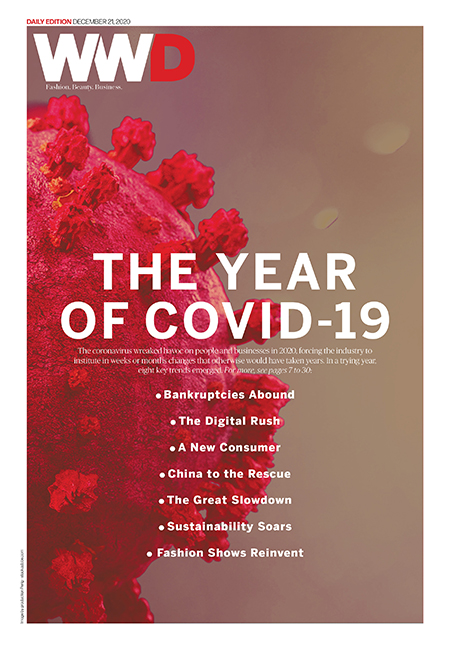 Spring of 2020 looked a bit bleak for the magazine industry; we watched as ad budgets were slashed and photoshoots turned into logistical nightmares. It was a perfect storm that would certainly tax the resilience and innovation of publishers. And for the most part, the industry rose to the occasion.
Spring of 2020 looked a bit bleak for the magazine industry; we watched as ad budgets were slashed and photoshoots turned into logistical nightmares. It was a perfect storm that would certainly tax the resilience and innovation of publishers. And for the most part, the industry rose to the occasion.
1.
To understand what happened to the industry this year in terms of print frequency— beyond the headlines — WWD took a deep dive into title frequency.
“In an analysis of 45 U.S.-based titles, WWD found that 26, or 58 percent, had a lower print frequency this year compared to 2019; two have ceased print operations for good and another is on hiatus with print under review,” writes Kathryn Hopkins in WWD. “Only two publications increased frequency.”
Hopkins points out that many big titles — Esquire, Cosmo and Elle among others — reduced their frequency, while publishers ramped up their paywalls. Others decided to leave gaps in the paywalls for critical COVID-19 content, which earned them a lot of goodwill. (Harvard Business Review said they were “created for moments like these.”)
Many publishers are reporting their frequency changes will not be permanent, and were a reflection of the challenges involved in shooting and creating a magazine under the restrictions of COVID-19, while some changes were already in the works before the pandemic hit.
“Every year, we review publishing frequency across our portfolio in the context of the brands’ touchpoints across print, digital, social and video,” a Hearst spokeswoman said. “While the pandemic played a role in our overall planning for 2020, many of the changes were made last year as part of our strategy to improve the quality of our products, balance content across all of the important distribution channels and deepen the relationship with our audience.”
2.
What WWD learned from their research:
- Condé Nast trimmed frequency on a few titles
- Vogue published 11 issues, combining their June and July issues
- Vanity Fair and Allure both printed one issue fewer than last year
- Meredith maintained the same publishing calendar, for the most part, cutting frequency on just two titles, a move that was already planned in 2019.
- Other newsstand staples like People and InStyle kept to their usual publishing schedule.
- Time, Sports Illustrated, Men’s Journal, Fortune and The Atlantic all reduced frequency this year; no word plans for 2021 yet from many of these titles.
3.
What the industry learned from 2020:
Was it a rough year for publishing? No doubt about it. Was it the death knell many were predicting in the spring? Nope. Instead, we learned a lot about the industry and the people it serves:
- Publishers saw subscription rates surge at many titles, thanks to locked-down readers looking for trusted, relevant content;
- Brands embraced paid digital content strategies … especially in the news media … that had alluded many up to this point;
- Membership models continued to evolve;
- The neighborhood newsstand became something of a hero in many cities; and
- Readers genuinely embraced the titles that meant something to them and gave them the information they craved during this wild year.
It was a year of fast innovation, but much of the change we see was going to happen anyway; 2020 just speeded it up … and for that, the publishing world can be grateful. The near future demands flexibility, and if 2020 is any gauge, this industry has that in spades.

December 31, 2020, 8:33 am
January 8, 2021, 2:27 pm